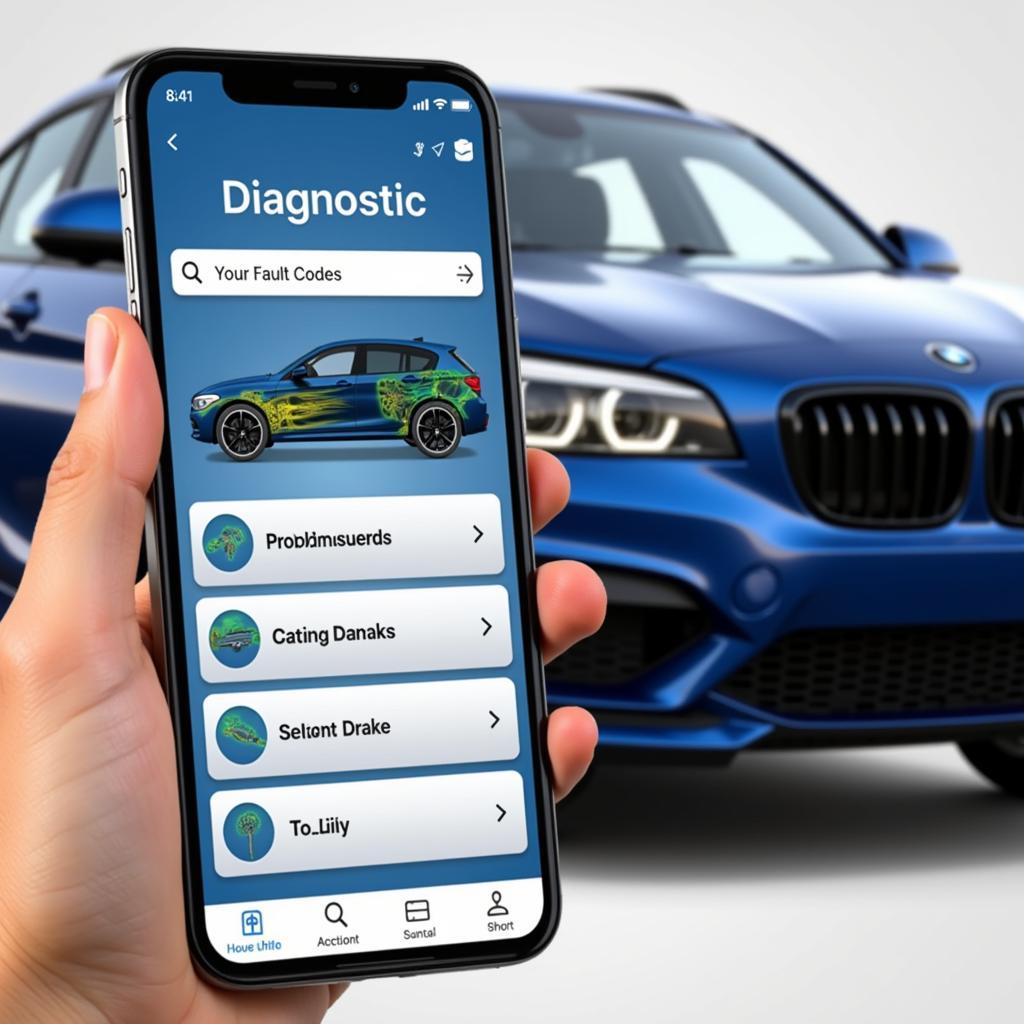A flashing brake warning light on your dashboard is a clear signal that something is wrong with your vehicle’s braking system. Ignoring this warning could lead to serious consequences, putting you and others on the road at risk. This comprehensive guide will delve into the common causes of a flashing brake warning light, how to diagnose the problem, and the steps you can take to resolve it.
Common Causes of a Flashing Brake Warning Light
While a flashing brake warning light always indicates a braking system issue, the specific cause can vary. Here are some of the most common culprits:
- Low Brake Fluid Level: Your car’s braking system relies on hydraulic pressure to function correctly. If the brake fluid level is low, often due to a leak, it can cause the warning light to flash.
- Worn Brake Pads: Brake pads are designed to wear down over time. When they become too thin, a sensor within the brake system triggers the warning light.
- Faulty ABS System: If your vehicle is equipped with an Anti-lock Braking System (ABS), a malfunctioning component within this system can trigger the flashing light. This could be due to a faulty ABS sensor, control module, or wiring issue.
- Faulty Parking Brake Switch: Some vehicles may trigger the brake warning light if the parking brake is not fully released. This could be due to a faulty parking brake switch or a simple oversight.
Diagnosing a Flashing Brake Warning Light
Determining the root cause of a flashing brake warning light requires a systematic approach:
- Check Your Brake Fluid: The first and easiest step is to check your brake fluid level. Locate the brake fluid reservoir under the hood (refer to your owner’s manual for its exact location). If the fluid level is below the “minimum” mark, it needs to be topped up. However, simply adding brake fluid without addressing the underlying cause of the low level is not a solution.
- Inspect Your Brake Pads: Visually inspect your brake pads through the spaces between the wheel spokes. If you notice the pads are thin or worn down to the metal backing plates, it’s time for a replacement.
- Utilize Diagnostic Tools: For more complex issues like ABS faults, professional-grade diagnostic tools are often necessary. These tools can read fault codes stored within your vehicle’s computer, pinpointing the problematic component.
Addressing the Issue
The solution to a flashing brake warning light depends entirely on the diagnosed cause:
- Low Brake Fluid: If a leak is detected, it needs to be repaired by a qualified mechanic. After the repair, the brake system should be bled to remove any air and ensure proper hydraulic pressure.
- Worn Brake Pads: Worn brake pads should be replaced in pairs (both front or both rear). It’s recommended to have your brake rotors inspected and resurfaced or replaced at the same time for optimal braking performance.
- Faulty ABS Components: Faulty ABS sensors, control modules, or wiring harnesses typically require professional repair or replacement. These components are integral to the ABS system and should only be handled by qualified technicians.
- Faulty Parking Brake Switch: A faulty parking brake switch usually requires replacement. While a relatively straightforward repair, it’s best to consult a mechanic or refer to your vehicle’s service manual for guidance.
The Importance of Prompt Action
Ignoring a flashing brake warning light can lead to:
- Reduced Braking Performance: This can significantly increase your stopping distance, putting you at a higher risk of accidents.
- Complete Brake Failure: In extreme cases, ignoring the warning sign could result in complete brake failure, leading to potentially fatal consequences.
- Costly Repairs: Delaying repairs often leads to more extensive and expensive damage down the line.
Remote Diagnostics and Software Solutions
In today’s technologically advanced automotive landscape, remote diagnostics and software solutions are playing an increasingly vital role in addressing brake system issues.
-
Remote Diagnostics: Some manufacturers and specialized service providers offer remote diagnostics capabilities. This allows technicians to remotely access your vehicle’s computer system, retrieve fault codes, and assess the severity of the problem without needing physical access to your car.
-
Software Updates: Modern vehicles rely heavily on software to control various systems, including braking. Sometimes, a flashing brake warning light might be caused by a software glitch. Remote software updates can often rectify such issues without the need for physical intervention.
 Remote Car Diagnostics using Smartphone
Remote Car Diagnostics using Smartphone
Frequently Asked Questions
Q: Can I drive my car with a flashing brake warning light?
While technically possible, it’s strongly discouraged. Driving with a flashing brake warning light puts you and other road users at risk.
Q: How much does it cost to fix a flashing brake warning light?
The cost can vary significantly depending on the underlying cause. A simple brake fluid top-up might cost a few dollars, while a complete ABS module replacement could run into thousands.
Q: How often should I check my brake fluid?
It’s a good practice to check your brake fluid level at least once a month and anytime you notice a change in your brake pedal feel.
Q: Do I need to take my car to a dealer for brake repairs?
While dealerships can handle brake repairs, you are not obligated to use their services. Reputable independent mechanics can often perform the same repairs at a more competitive price.
Q: Can a flashing brake warning light be related to tires?
While rare, extremely worn tires with minimal tread can sometimes trigger ABS system faults, leading to a flashing brake warning light.
Conclusion
A flashing brake warning light should never be ignored. Promptly addressing the issue is crucial for ensuring your safety and preventing potentially costly repairs. If you’re unsure about diagnosing or resolving the problem yourself, seek assistance from a qualified mechanic or a trusted service provider. Remember, a properly functioning brake system is paramount for your safety and the safety of others on the road.
